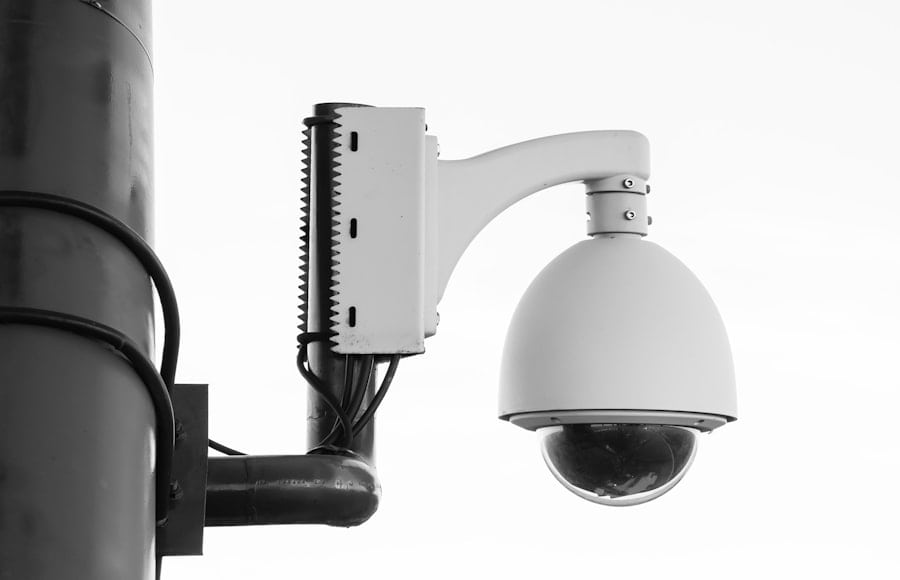In the modern digital landscape, firewall protection is crucial due to the ever-evolving nature of cyber threats. Firewalls serve as a protective barrier between trusted internal networks and untrusted external networks, such as the internet. They function by monitoring and controlling network traffic based on predefined security rules, effectively serving as the primary defense against unauthorized access and malicious attacks.
The implementation of firewalls is vital for protecting sensitive data, preventing unauthorized access to network resources, and blocking malicious traffic. Without firewall protection, organizations become vulnerable to various cyber threats, including malware, ransomware, phishing attacks, and other forms of cybercrime. A robust firewall solution significantly reduces the risk of security breaches and safeguards valuable assets from unauthorized access and exploitation.
Firewalls also play a critical role in enforcing internal security policies and managing traffic within networks. They can be configured to limit access to specific websites or applications, block certain protocols or ports, and monitor user activity to ensure compliance with organizational security policies. Through effective network traffic management, firewalls help organizations maintain a secure and productive work environment while minimizing the risks associated with insider threats and unauthorized data exfiltration.
Key Takeaways
- Firewall protection is crucial for safeguarding networks and data from cyber threats
- Best practices for firewall configuration include regular updates, strong authentication, and strict access controls
- Artificial intelligence can enhance threat detection capabilities and improve firewall protection
- Integrating firewall protection into overall security strategy is essential for comprehensive defense against cyber threats
- Firewall protection plays a key role in mitigating cyberwar threats and ensuring compliance with industry regulations and standards
- Ongoing monitoring and updating of firewall protection is necessary for maintaining strong security efforts
Implementing Best Practices for Firewall Configuration
When it comes to firewall protection, implementing best practices for firewall configuration is essential to ensure optimal security and protection against cyber threats. Proper firewall configuration involves defining and implementing security rules that dictate how traffic is allowed or denied based on specific criteria, such as source and destination IP addresses, port numbers, and protocols. By following best practices for firewall configuration, organizations can maximize the effectiveness of their firewall solution and minimize the risk of security vulnerabilities.
One best practice for firewall configuration is to implement the principle of least privilege, which involves granting only the minimum level of access or permissions necessary for users or systems to perform their intended functions. By restricting access to only essential services and resources, organizations can reduce the attack surface and limit the potential impact of security breaches. Additionally, organizations should regularly review and update their firewall rules to ensure that they align with current business requirements and security policies.
Another best practice for firewall configuration is to implement network segmentation, which involves dividing the network into separate segments or zones to control the flow of traffic and contain potential security breaches. By segmenting the network into distinct security zones, organizations can isolate sensitive systems and resources from less secure areas, thereby reducing the risk of lateral movement by attackers and limiting the scope of potential security incidents. Furthermore, organizations should consider implementing advanced firewall features, such as intrusion prevention systems (IPS), application layer filtering, and deep packet inspection, to enhance their overall security posture and protect against advanced threats.
Leveraging Artificial Intelligence for Advanced Threat Detection

In the face of increasingly sophisticated cyber threats, organizations are turning to artificial intelligence (AI) to bolster their firewall protection and enhance their ability to detect and respond to advanced threats. AI-powered threat detection solutions leverage machine learning algorithms to analyze network traffic patterns, identify anomalous behavior, and detect potential security incidents in real time. By leveraging AI for advanced threat detection, organizations can gain deeper insights into their network activity and proactively identify and mitigate potential security risks.
AI-powered threat detection solutions can analyze vast amounts of network data and identify patterns that may indicate malicious activity or unauthorized access attempts. By continuously learning from new data and adapting to evolving threats, AI-powered threat detection solutions can effectively identify and respond to emerging cyber threats that may evade traditional signature-based detection methods. Additionally, AI can help organizations automate the process of threat detection and response, enabling faster and more efficient incident response capabilities.
Furthermore, AI-powered threat detection solutions can provide organizations with actionable insights and intelligence to improve their overall security posture. By correlating disparate data sources and identifying potential indicators of compromise, AI can help organizations proactively identify vulnerabilities and weaknesses in their network defenses. Additionally, AI can help organizations prioritize security alerts and focus their resources on addressing the most critical threats, thereby maximizing the effectiveness of their security operations.
Integrating Firewall Protection into Overall Security Strategy
| Firewall Type | Advantages | Disadvantages |
|---|---|---|
| Packet Filtering Firewall | Low overhead, good for basic protection | Limited ability to inspect content |
| Stateful Inspection Firewall | Better security than packet filtering | Higher resource usage |
| Proxy Firewall | Deep content inspection | Slower performance due to proxying |
Effective firewall protection is a critical component of an organization’s overall security strategy, which should encompass a comprehensive approach to safeguarding against a wide range of cyber threats. Integrating firewall protection into the overall security strategy involves aligning firewall policies and configurations with broader security objectives and ensuring that firewalls work in concert with other security controls to provide layered defense against potential threats. One key aspect of integrating firewall protection into the overall security strategy is to ensure that firewall policies are aligned with organizational security policies and compliance requirements.
By establishing clear guidelines for firewall configuration and management, organizations can ensure that firewalls are configured to enforce security policies and regulatory requirements effectively. Additionally, organizations should regularly review their firewall policies to ensure that they remain aligned with evolving business needs and changing threat landscapes. Another important consideration for integrating firewall protection into the overall security strategy is to implement a defense-in-depth approach that combines multiple layers of security controls to provide comprehensive protection against cyber threats.
In addition to firewalls, organizations should consider implementing other security measures, such as intrusion detection systems (IDS), endpoint protection solutions, secure web gateways, and security information and event management (SIEM) platforms. By integrating these various security controls, organizations can create a multi-faceted defense strategy that addresses different attack vectors and provides greater resilience against potential security incidents.
Mitigating Cyberwar Threats with Firewall Protection
As cyberwarfare continues to pose a significant threat to national security and critical infrastructure, the role of firewall protection in mitigating cyberwar threats has become increasingly important. Firewalls play a crucial role in defending against cyberwarfare by protecting networks from unauthorized access, preventing the spread of malware, and thwarting advanced persistent threats (APTs) that may be used in state-sponsored cyber attacks. One way in which firewalls help mitigate cyberwar threats is by enforcing strict access controls and filtering network traffic to prevent unauthorized access to critical systems and resources.
By implementing robust firewall policies that restrict inbound and outbound traffic based on predefined rules, organizations can limit the exposure of sensitive assets to potential adversaries and reduce the risk of unauthorized infiltration or exfiltration of data. Additionally, firewalls can be configured to block known malicious IP addresses, domains, or signatures associated with cyberwarfare activities, thereby providing an additional layer of defense against state-sponsored attacks. Furthermore, firewalls can help organizations detect and block advanced cyberwarfare tactics, such as reconnaissance activities, command-and-control communications, and data exfiltration attempts.
By leveraging advanced firewall features, such as deep packet inspection and application layer filtering, organizations can identify suspicious network behavior indicative of cyberwarfare activities and take proactive measures to mitigate potential threats. Additionally, firewalls can integrate with threat intelligence feeds to stay updated on emerging cyberwarfare tactics and indicators of compromise, enabling organizations to adapt their defenses accordingly.
Ensuring Compliance with Industry Regulations and Standards
In today’s regulatory environment, ensuring compliance with industry regulations and standards is a critical consideration for organizations seeking to maintain effective firewall protection. Industry regulations, such as the Health Insurance Portability and Accountability Act (HIPAA), the Payment Card Industry Data Security Standard (PCI DSS), and the General Data Protection Regulation (GDPR), impose specific requirements for protecting sensitive data and securing network infrastructure. By ensuring compliance with these regulations through effective firewall protection, organizations can avoid costly penalties and reputational damage resulting from non-compliance.
One key aspect of ensuring compliance with industry regulations and standards is to align firewall configurations with specific regulatory requirements related to data protection, access control, and incident response. For example, organizations subject to HIPAA regulations must implement appropriate safeguards to protect electronic protected health information (ePHI) by controlling access to network resources through robust authentication mechanisms and encryption protocols. Similarly, organizations handling payment card data must adhere to PCI DSS requirements for securing cardholder data by implementing firewalls to segregate cardholder data from other network traffic.
Additionally, organizations should regularly conduct audits and assessments of their firewall configurations to ensure ongoing compliance with industry regulations and standards. By performing regular reviews of firewall policies, rule sets, and access controls, organizations can identify potential gaps in compliance and take corrective actions to address any deficiencies. Furthermore, organizations should document their firewall configurations and related security controls to demonstrate adherence to industry regulations during regulatory audits or assessments.
Monitoring and Updating Firewall Protection for Ongoing Security Efforts
To maintain effective firewall protection over time, organizations must prioritize ongoing monitoring and updating of their firewall configurations to address emerging threats and evolving business requirements. Continuous monitoring of firewall logs and network traffic is essential for detecting potential security incidents, identifying unauthorized access attempts, and ensuring that firewall policies remain effective in mitigating new threats. One approach to ongoing monitoring of firewall protection involves leveraging security information and event management (SIEM) platforms to aggregate and analyze firewall logs in real time.
SIEM solutions can provide organizations with actionable insights into network activity by correlating firewall logs with other security event data from across the organization’s infrastructure. By monitoring for anomalous behavior or suspicious patterns in network traffic, organizations can proactively identify potential security incidents and respond accordingly. In addition to monitoring network activity, organizations should prioritize regular updates and maintenance of their firewall configurations to address known vulnerabilities and ensure optimal performance.
This includes applying firmware updates provided by firewall vendors, reviewing and revising firewall rules based on changing business needs or security requirements, and conducting periodic penetration testing to validate the effectiveness of firewall protections. Furthermore, organizations should consider implementing automated tools for managing firewall configurations to streamline the process of updating rulesets and ensuring consistency across multiple firewall devices. In conclusion, effective firewall protection is essential for safeguarding organizational assets from a wide range of cyber threats.
By understanding the importance of firewall protection, implementing best practices for firewall configuration, leveraging artificial intelligence for advanced threat detection, integrating firewall protection into overall security strategy, mitigating cyberwar threats with firewall protection, ensuring compliance with industry regulations and standards, and monitoring and updating firewall protection for ongoing security efforts, organizations can establish a robust defense against potential security incidents while maintaining compliance with regulatory requirements. As cyber threats continue to evolve in complexity and scale, it is imperative for organizations to prioritize their firewall protection efforts as part of a comprehensive approach to cybersecurity.
If you’re interested in learning more about the potential impact of the metaverse on industries and business collaboration, check out this article on Metaversum. It explores how the metaverse could revolutionize the way businesses work together and collaborate in virtual spaces.
FAQs
What is a firewall?
A firewall is a network security device that monitors and controls incoming and outgoing network traffic based on predetermined security rules. It acts as a barrier between a trusted internal network and untrusted external networks, such as the internet.
How does a firewall work?
A firewall works by examining data packets and determining whether to allow them to pass through or block them based on a set of security rules. It can filter traffic based on IP addresses, port numbers, and protocols, among other criteria.
What are the types of firewalls?
There are several types of firewalls, including network layer firewalls (such as packet filtering firewalls and stateful inspection firewalls), application layer firewalls, and proxy firewalls. Each type has its own specific way of filtering and controlling network traffic.
What are the benefits of using a firewall?
Firewalls help protect networks from unauthorized access, malware, and other security threats. They can also provide visibility into network traffic and help enforce security policies.
Do all networks need a firewall?
It is highly recommended for all networks, especially those connected to the internet, to have a firewall in place to protect against potential security threats. Firewalls are an essential component of a comprehensive network security strategy.
Can a firewall prevent all security threats?
While firewalls are an important security measure, they cannot prevent all security threats on their own. It is important to complement firewall protection with other security measures such as antivirus software, intrusion detection systems, and regular security updates.












Leave a Reply